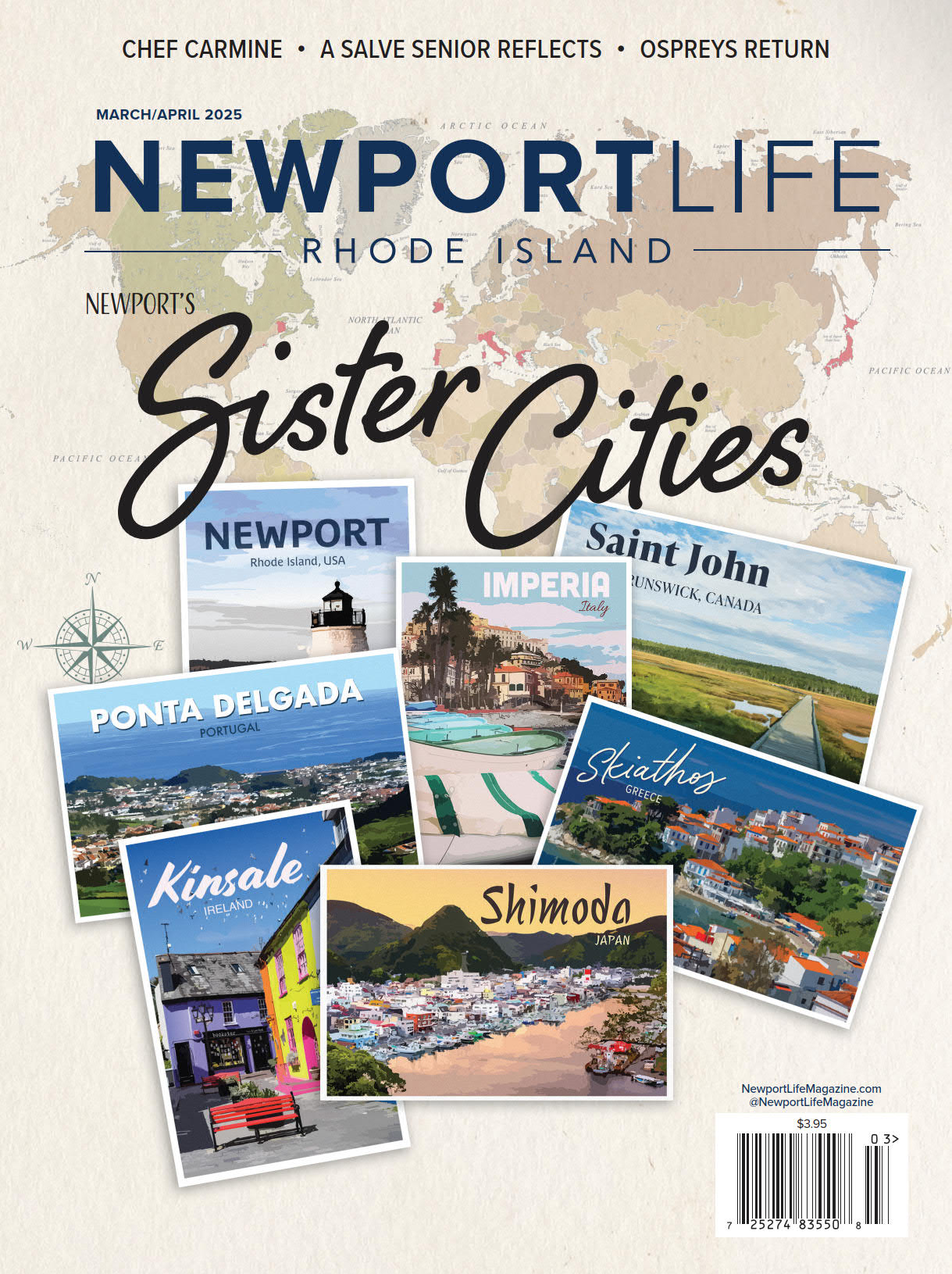Rose Island is rich in history, preservation, and a new generation of community
By Christopher Reeves
There’s one word most often used to describe a visit to this semi-remote island: special
Photos by Francesca Dolnier
Capt. Nora Eschenheimer is alone on Rose Island watching a January storm force icy rain through the door seams of the lighthouse. Her only company are the staticky Coast Guard announcements over the VHF radio warning mariners to stay off the water and her small white dog, Lily, who needs to relieve herself before bed. Nora opens the door to take Lily out and is knocked back as 40 mph winds burst through.
She forces her way outside and pulls hard against the torrent to close the door behind her. The doorknob pops off just as the latch clicks shut. She and Lily are stranded outside.
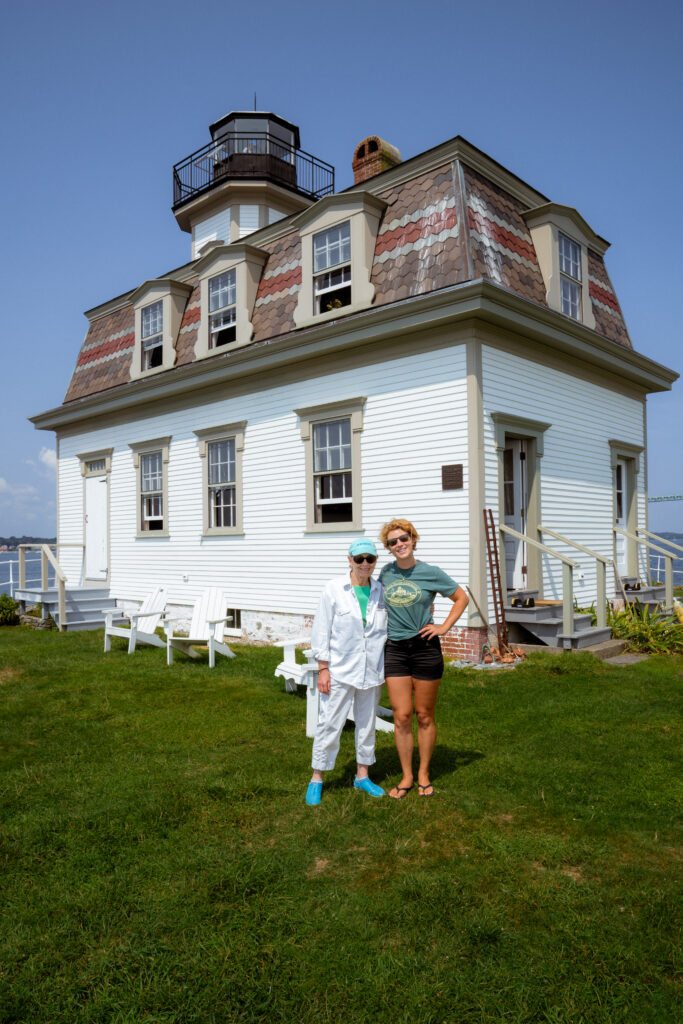
Nora forces her way through the rain to retrieve a spare key to the upstairs Keeper’s Apartment. This door is almost too tough to unlock with the wind pushing against the latch. The lock finally budges and with a bang, the door slams open sending Nora, Lily, and a sheet of rain tumbling in.
They find that the rain has now forced its way through a leak somewhere in the lighthouse’s 150-year-old mansard roof and a steady stream of water is falling from the rim of the interior stairwell.
“I went downstairs, and it was raining in the lighthouse!” says Nora. “I grabbed everything that could possibly collect water, and it felt like every lighthouse keeper that has ever kept Rose Island was there with me saying, ‘This is what you’re going to do now, kid!’ It just felt so communal, even though I had never been more alone.”
Captain Nora’s stay in Rose Island’s lighthouse to work and, well, “keep” it, is a return to winter keepers on the island that have been absent since the pandemic. Now, the summer heat is departing along with the newly fledged seabirds who were born on the island this year.
Hundreds of “keepers” have stayed overnight in the lighthouse during its busy season, each contributing to the story of the place. In fact, everyone who visits is invited to care for the island in real ways, from repairing the historic buildings and restoring native plants, to cleaning the beaches or caring for the entire lighthouse during an overnight stay. All are key to the island’s success.
~ ~ ~
Rose Island is an 18-acre scrap of bedrock peeking out above the green veil of Narragansett Bay. It has served as summer fishing grounds for Native Americans. It is home to the incomplete Fort Hamilton, built in 1798 to house 300 U.S. soldiers. It served as a quarantine hospital during cholera and yellow fever epidemics in the mid 1800s, and was an integral part of Torpedo Station, Newport during both world wars. The island also boasts its iconic lighthouse, and for half the year, serves as a wildlife sanctuary.
Upon arriving, you cross a small beach with very little trash and walk past the remains of the south wall of Fort Hamilton, where native milkweeds, yarrow, and asters have been planted by Horus Khuit and Kidder Gowen, the owners of Hawk & Handsaw Farm in Portsmouth.
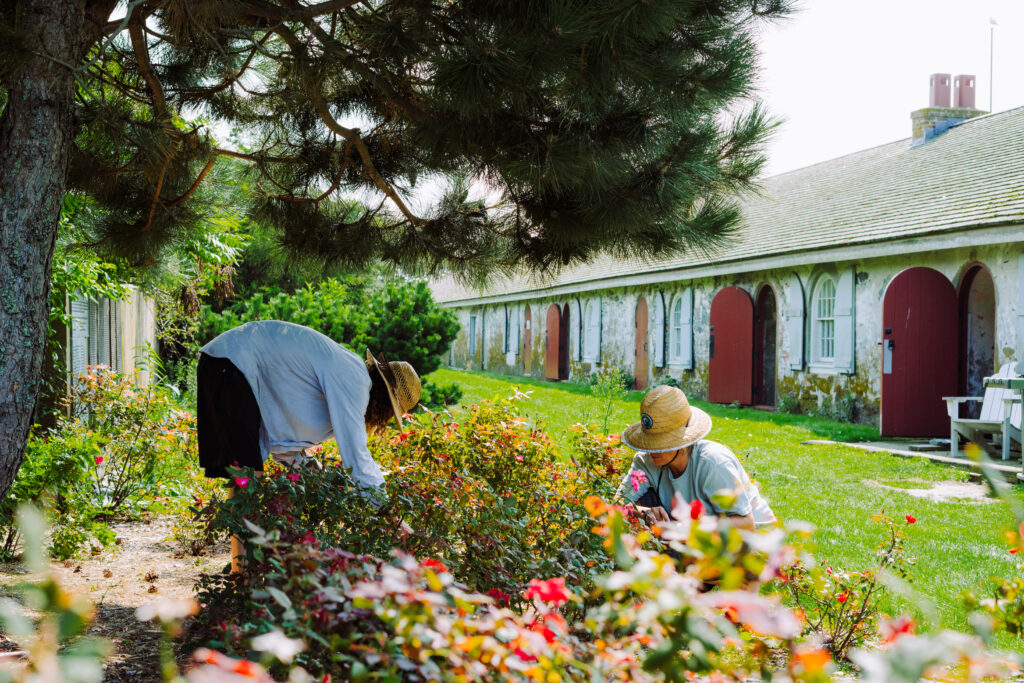
Various found treasures from the sea are lovingly tucked between the rocks of the wall by previous visitors. Passing the post of signs pointing to the homes of people who have shared your journey, you stroll into the museum floor of the lighthouse. It’s obvious as soon as you enter that this place is more than a sterile recitation of a specific period of history. It’s a living (and sometimes live-in) story that invites you in.
“People fall in love because they become involved. They’re not just learning something. They’re actually creating and improving something that’s bigger than they are,” says Charlotte Johnson. “There’s this incredible romantic, historic aura around it that says, ‘This is an important place.’ It’s not, don’t touch, don’t do that, don’t go there, with movie ropes everywhere. It’s, come on, pitch in!”
Johnson, now retired, is a founding member of the Rose Island Lighthouse Foundation and is credited with saving the island from being developed into condos and an 850-slip marina that would have deposited 1,500 cubic yards of dredge material atop the island, burying its historic structures and wetlands.
After the completion of the well-lit Claiborne Pell Bridge — commonly called the Newport Bridge — in 1969, the Rose Island lighthouse was no longer needed for maritime navigation and was decommissioned. The island was abandoned, and the lighthouse was gutted of all valuable material.
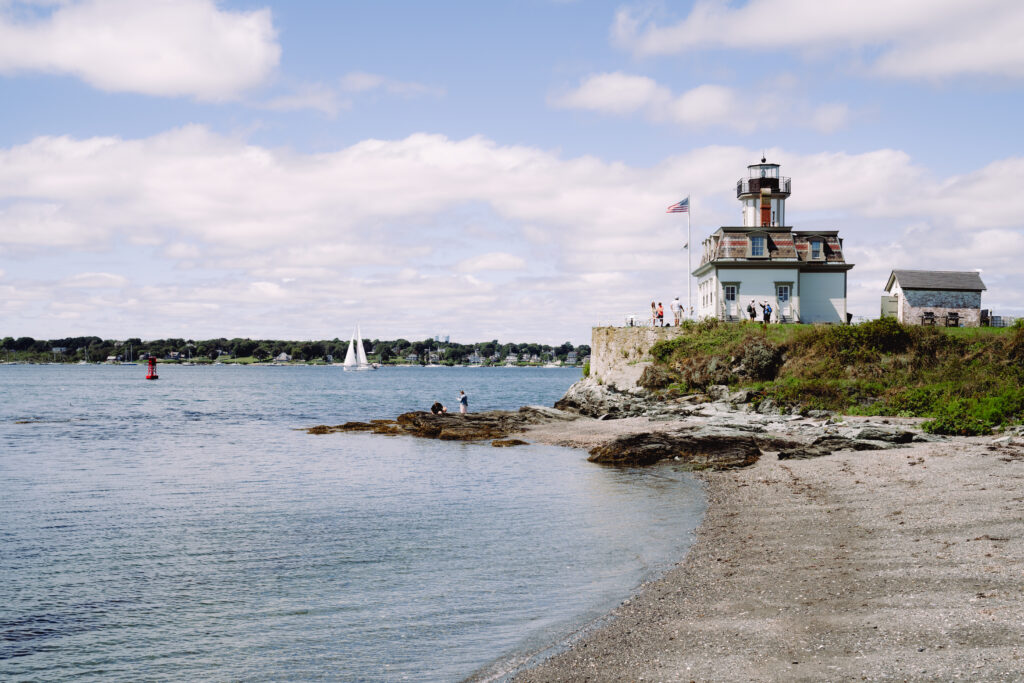
It sat derelict for the next 15 years.
Johnson was exploring the island at a time when most people thought of it as a munitions dump for the military. She grew angry when she heard that the Fort Hamilton barracks, with its captivating arched brick ceilings, would be buried to make way for condos.
“What right does anybody who owns a precious piece of property like this have to destroy it?” she asked.
Johnson amassed public support for saving the island, at one point even standing shoulder to shoulder with locals holding bed sheets to symbolically wrap its coastline like a valuable present.
She and a group of local civic leaders formed the Rose Island Lighthouse Foundation in 1984 to obtain the 1.5-acre parcel that includes the lighthouse and barracks. This parcel was given to the City of Newport with the agreement that the Lighthouse Foundation would manage its restoration at no cost to the city.
The Foundation raised only $400,000 of the $1.2 million cost to restore the lighthouse. The rest was donated by a dedicated community in cash and volunteer labor.
~ ~ ~
When the new stewards arrived, the lighthouse’s lantern room was filled to the brim with bird guano that had to be shoveled by hand to make way for a new light.
After almost a decade of restoration work, on August 7, 1993 — National Lighthouse Day — the lighthouse lantern beamed across the water every six seconds, guiding mariners safely through Narragansett Bay as it did for 101 years.
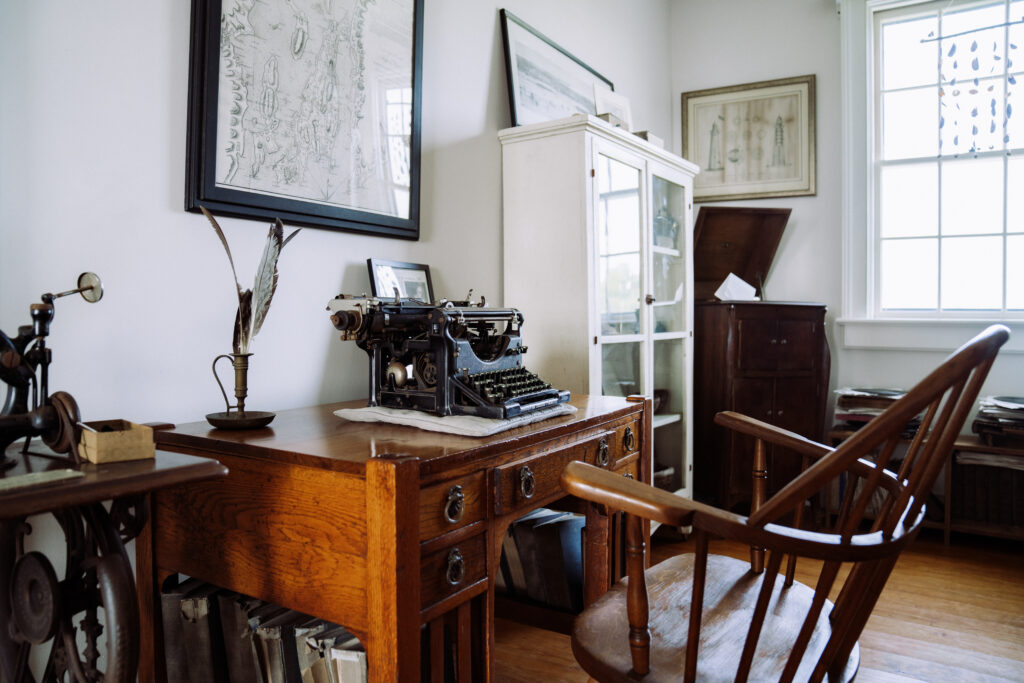
Though the lighthouse was protected, 16.5 acres of the island remained eligible for development. Johnson, determined to preserve the parcel in its entirety, plunged into the depths of its architectural history, traveling to Washington, D.C., London, and Paris to research Fort Hamilton.
But history isn’t what ultimately saved Rose Island; the birds did.
“While the island was being left alone, the birds took over, and all of a sudden, the environment became the most important part,” says Johnson. “We ended up with egrets, glossy ibis, black crowned night heron, oystercatchers; a whole slew of maritime nesting birds.”
In 1999 the Lighthouse Foundation was granted $629,750 from the Rhode Island Department of Environmental Management, the Alletta Morris McBean Charitable Trust, and the Prince Charitable Trust to purchase the remainder of the island from CMTS Partnership, a conglomerate of four business partners, on a conservation easement. The result is a wildlife sanctuary — now in its 25th year — established in perpetuity to protect nesting birds between April 1 and August 14 every year.
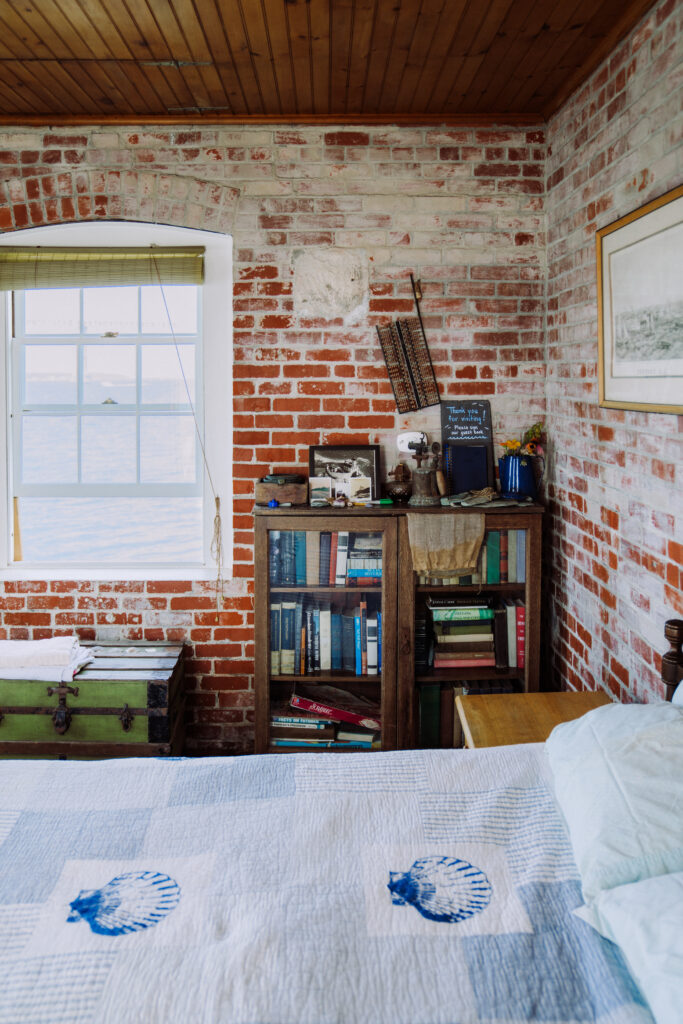
Today, the island serves as a research site for Salve Regina University professor and ornithologist Jameson “Jim” Chace. For the past five summers, he and his student research assistants have spent ten weeks in the arracks studying the reproductive success of island-nesting songbirds like catbirds, song sparrows, and yellow warblers. They seem to thrive on Rose Island compared to birds that nest on the mainland.
The research partnership has prompted consideration of new opportunities for university level science and sustainability education on the island.
“It’s been a slow process of rewilding the refuge in a way that better stewards the land for the birds and other animals that rely on it,” says Sean O’Connor, executive director of the Rose Island Lighthouse and Fort Hamilton Trust, as the foundation is now known. “I’m thinking about how we further cultivate a human connection to the wildlife refuge.
“What could it be like to have a working or educational oyster or kelp farm plot adjacent to our shoreline? Can we thoughtfully evolve the wetlands over five or ten or 25 years to allow coastal retreat inwards as sea level rises? Leaning into our off-gridness in a way that can inspire and educate feels like a really big deal for us, too,” says O’Connor, who began his post in October 2022.
A recent focus has been on improving public access to the island. The Rhode Island Foundation has funded a pilot program to provide free overnight visits to underserved families that will be implemented in 2025.
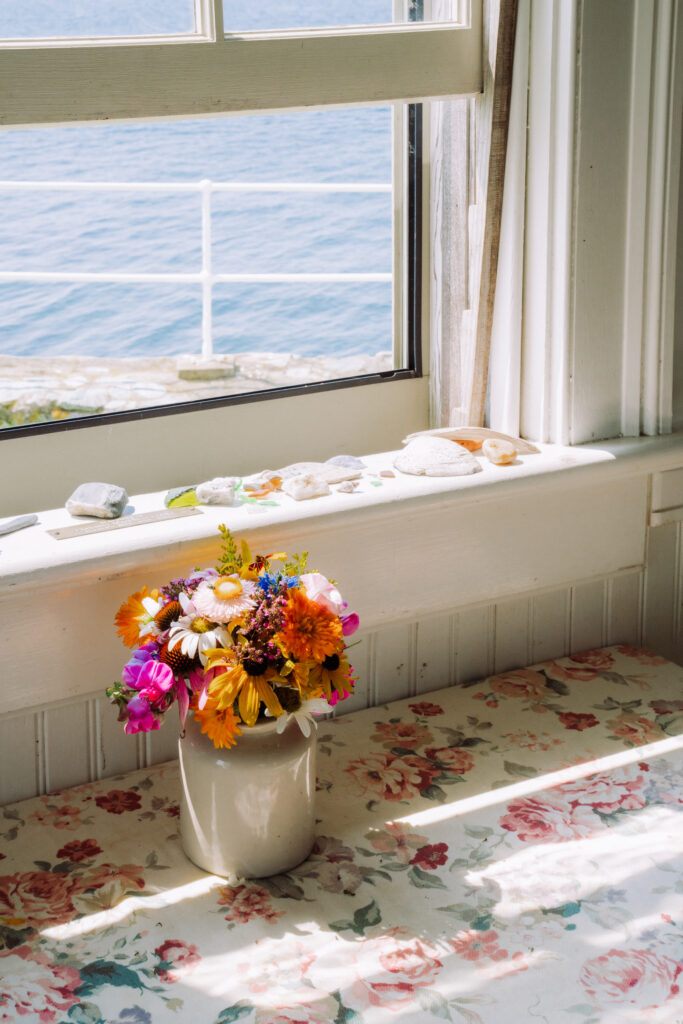
“This summer, we have multiple local summer camps that are bringing their students to the island for free because of our partnership with the Jamestown Newport Ferry,” says O’Connor. “I would love for our youth to have interaction with the island at multiple points in their educational journeys.”
Improving access also means promoting the history of Rose Island, not just its lighthouse. A recent grant from Rhode Island Commerce will fund a new exhibit in the Fort Hamilton barracks.
“It’ll be a space where we can fully unpack the story of Rose Island, from its pre-colonization indigenous roots to the work that’s happened over the last 40 years to restore the island, manage the wildlife refuge, and everything in between,” O’Connor says. “We’re hoping to get some version of that museum space open to visitors in our 2025 season.”
The organization is conducting a strategic planning process this fall. A key goal is to establish an endowment fund through new fundraising and development work.
“I feel honored to be stewarding the legacy of Rose Island and I want to try to grow deeper roots,” says O’Connor. “I hope that when I eventually leave, we’ll have a really rich endowment that we can draw from for maintaining the lighthouse and the island property.”
~ ~ ~
Despite the stream of traffic traveling over the bridge and Rose Island’s proximity to Newport’s bustling waterfront, it feels far from it all. You slow down a little while you’re there.
The island has no utility connections to Newport, solar energy provides electricity to the lighthouse, and collected rainwater is the sole source of fresh water. Both resources are carefully managed by visitors, who feel a connection to the past and the future while experiencing island life.
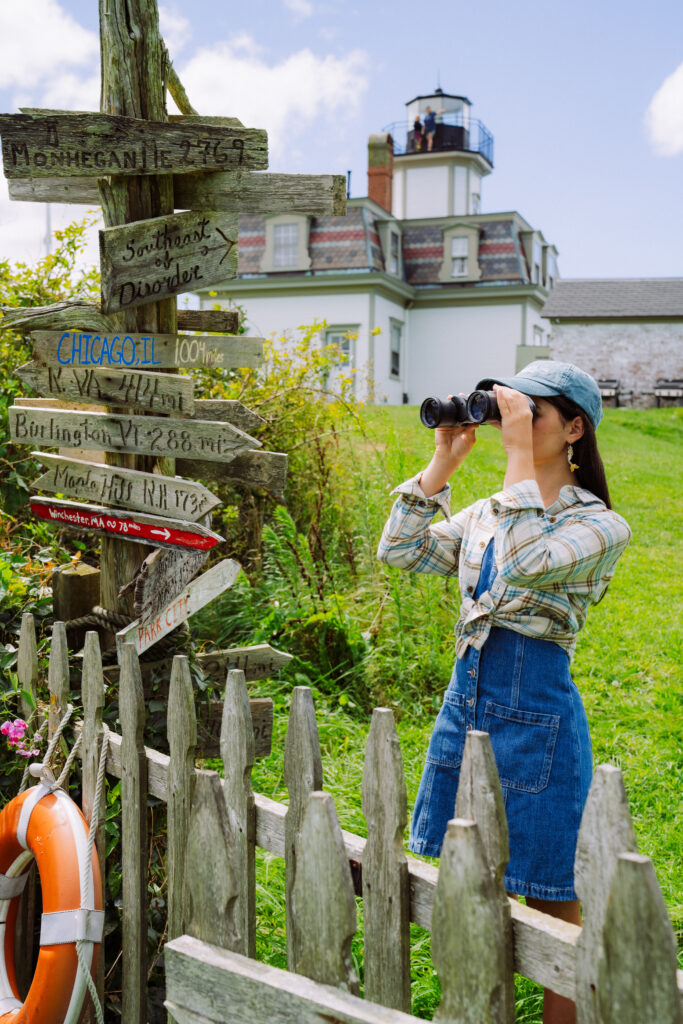
Capt. Nora Eschenheimer works on the island. She is Charlotte Johnson’s niece and reminds touring school groups what her aunt and others worked years to preserve and restore.
“Think about what this would look like, paved over with condos and a marina. Imagine how that would make you feel,” she says. “You don’t have to imagine. Just look over at Goat Island. Look at the condos, the hotel, the marina. Do you feel any connection?
“When I give the tour, people say, ‘Wow, so many people work so hard to take care of this lighthouse.’ And I tell them, ‘You are part of it! This is not a hotel, this is not an Airbnb. You are the only reason we can be here today. You are part of this story.’”
Most say they feel connected to Rose Island after a visit, invariably describing it as special. The connection may extend to everyone who has ever kept the island’s lighthouse, or fixed a broken window, or shoveled guano, made the beds, restored its native plants.
None of it goes unnoticed, Eschenheimer says.
“I think the lighthouse lets you know it appreciates you. It kind of winks back, like, ‘Thanks.’”
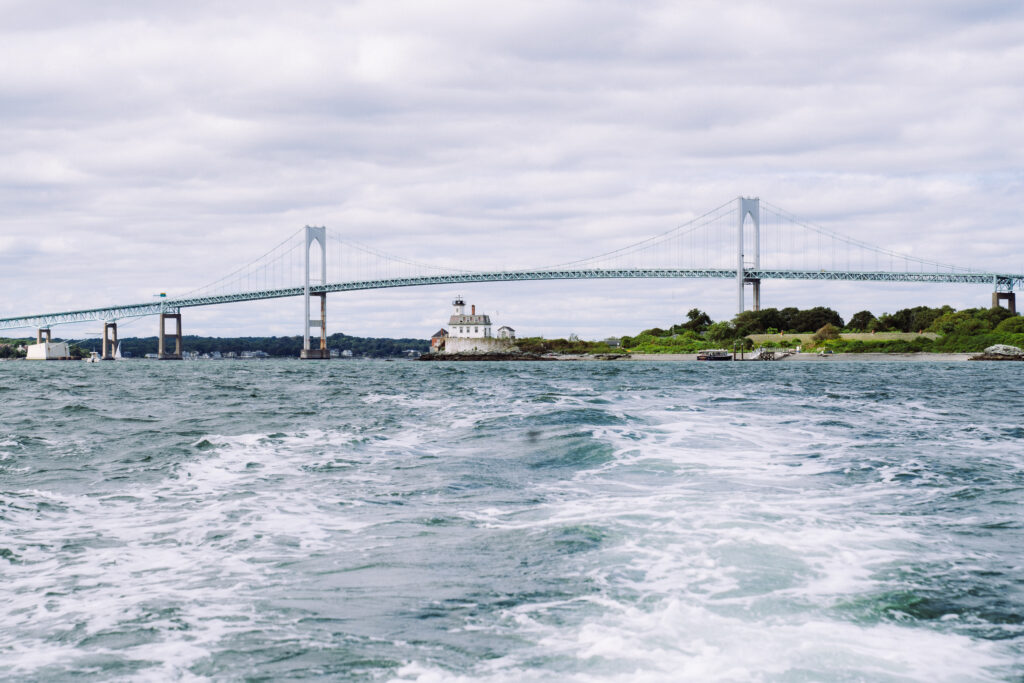
Chris Reeves serves as the Island Manager for the Rose Island Lighthouse and Fort Hamilton Trust. He is a local captain, writer, and Dad-of-all-trades. Visit roseisland.org for more.
